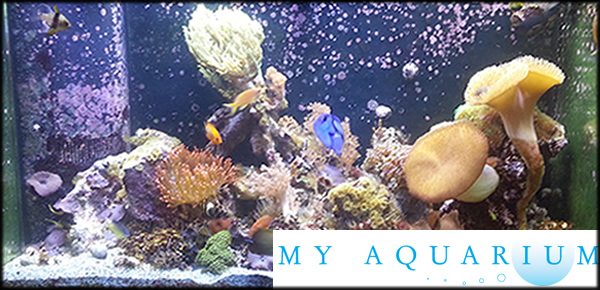How To Acclimate New Fish Into Your Aquarium
When you purchase new fish from the local fish store there is no telling what the water parameters such as temperature, salinity, PH, nitrates, and others are in the fish store tank water is compared to your own. It comes very recommended that you don't ever just dump your fish (or any other living aquatic animal) straight into your tank, they need to slowly adjust to the new tank environment. The sudden change in water parameters could kill the fish or worse yet cause them to become sick which could then potentially kill all of your fish. Adding the water itself from the fish store can also cause catastrophe by introducing parasites or other infections that may exist in the fish store's water.
There are three common methods of acclimating your fish into your home aquarium, each more complicated than the last and each also more secure. You can decide for yourself the lengths you need to go based on the species involved and your own preferences.
It is best to add new fish during feeding time or just after tuning the lights out to allow the fish to adjust to the new environment during a time when aggression from other fish will be minimal.
Never acclimate your new fish and new invertebrate in the same container. Many invertebrates (coral, plants, sponges, shrimp, crabs, etc) can release toxins or cause other problems when stressed and should go through this stressful process alone, depending on the species it may be fine but it may not and it's better to be safe than sorry.
The Float Bag Method:
This is the most common method and is easily achieved while still giving the fish a decent ability to properly acclimate to the tank water. This method also carries the potential of allowing a broken bag to leak water from the fish store into your tank.
Simply set the bag into your display tank water and allow it to float there for 15 minutes, this allows the temperature to slowly adjust to your display tanks temperature. After 15 minutes or so, open the top of the bag and remove 25% of the water (into the sink) and replace that with an equal amount of your tank water (approximations are fine). Wait another 10-15 minutes and this time remove about 50% of the bag water into the sink and replace it with your tank water. After another 10-15 minutes dump all bag water into the sink (make sure to hold onto the fish) and then gently place the fish alone without the fish stores water into your display tank.
The Drip Acclimation Method:
The second method of acclimating your fish or invertebrates to their new home is called the drip method. This method is a little safer than the float bag method but also slightly more complicated.
Drip acclimations basically consists of slowly dripping water from your display tank into a container filled with your fish store water and your new pet. You will need a safe container to keep the fish in (a pitcher only used for this purpose works well), a piece of plastic tubing (flexible plastic tubing can be found at any hardware store), and an airflow gang valve (also found at the hardware store).
First pour the fish store tank water and new fish from the bag into a secure container used only for this purpose such as a large pitcher or bucket. Next cut your small plastic tubing in half and secure the airflow gang valve in between the two halves of tubing. Next place one end of your plastic tube into the display tank and start a siphon on the other end by sucking the air out of the tube (while the outflow end is lower than the end in the tank). Adjust the flow valve you have inserted into the center of the plastic tube to allow just enough water through the tube so that it drips slowly into the container with the fish in it.
This method allows your new fish to slowly adjust to the tank water it will be living in. Make sure to dump out any water that comes close to overflowing the container the fish is being held in. Normal drip acclimation time is 1-2 hours for fish and 2-3 hours for invertebrates..
The Quarantine Tank Method:
The third acclimation method is basically the same as the first or second but with an intermediary tank between the fish store and your display to ensure there are no parasites or illnesses before introducing the specimen into your main display. Adding a quarantine tank to your introductory method is considered overkill by many but it is by far the most successful method of ensuring only healthy specimens make it into your home aquarium.
The quarantine method requires you to build an entire long term stable tank in addition to your display tank. This quarantine tank can be small, with or without sand or rocks but make sure to have something in the tank such as decorations or PVC for the fish to hide, also include simple filtration and aeration of the quarantine tank water. Leave this tank set up long before you intend to add new fish to it to allow it to cycle (a permanent setup is the best method).
Once you have a stable and cycled quarantine tank set up you are ready to pick out some new additions. Use the drip method of acclimations above to add the fish from the fish store into the quarantine tank. To be absolutely safe allow your new addition to remain in the quarantine tank for 2-3 weeks and ensure the fish is eating properly, behaving properly, and show no physical signs of illness. Only after you are entirely satisfied the fish is healthy and happy use the drip method once more to move the fish from the quarantine tank into its final home.


